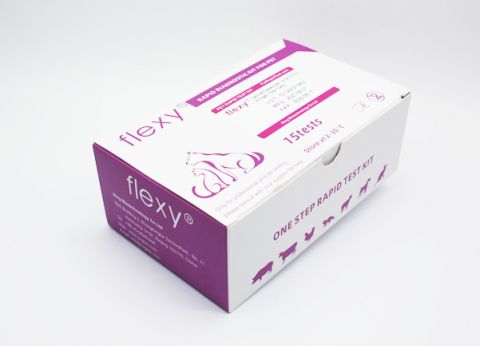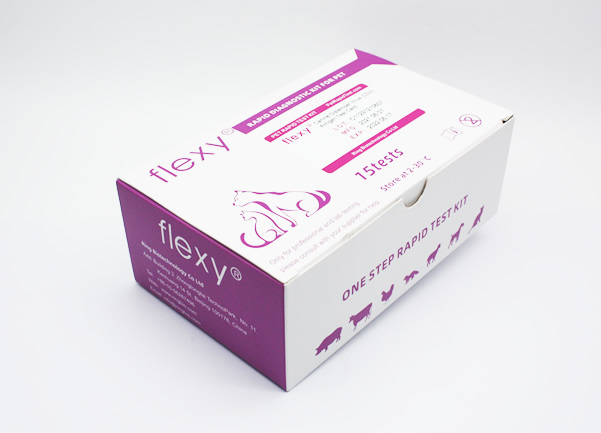
This Feline Herpesvirus FHV Ag Rapid Test Kit is based on an immunochromatographic assay to detect FHV Ag in feline saliva, nose swab and eye conjunctive secretion, which is rapid, accurate and easy-to-operate.
Basic information
Feline herpesvirus infection is an extremely common disease and leads to ocular problems in a large percentage of affected cats. Feline herpesvirus-1 is maintained within the feline population by ready transmission from cat to cat, ensuring continued exposure of kittens and adults. The virus is similar in structure and pathogenicity to herpes simplex virus in humans.
Key facts of the Feline Herpesvirus FHV Ag Rapid Test Kit
- Ready to use kits for pet owners and vet clinic
- No special instrument required
- Suitable for field test
- Result in 10min.
Feline Herpesvirus FHV Ag Rapid Test Kit Components
| Item # | Item | Qty |
|---|---|---|
| 1 | Rapid Test Card | 15 pcs |
| 2 | Sample buffer tube | 15 bottles |
| 3 | Plastic pipettes, 0.5ml | 15 pcs |
| 4 | Kit instruction, | 1 set |
What is herpesvirus infection?
Herpesvirus infection, also known as feline viral rhinotracheitis (FVR), is an infectious disease caused by feline herpesvirus type-1. As with other herpes viruses, the virus is very species-specific, and is only known to cause infections in domestic and wild cats. The virus can infect cats of all ages.
FVR is a major cause of upper respiratory disease in cats, and is the most common cause of conjunctivitis (inflammation of the tissues surrounding the eye, especially the lining of the lids and the third eyelid).
How does a cat become infected with feline herpesvirus?
A cat becomes infected with this virus by direct contact with virus particles. The virus is spread in saliva and in discharges from the eyes and nose of an infected cat. Therefore, an infection occurs when a susceptible cat comes into direct contact with an infected cat, or comes into contact with inanimate objects (e.g., clothing, food and water dishes, furniture) that have been contaminated with viral particles.
Which cats are most at risk for FVR infection?
All cats can become infected with FVR infections, but infection tends to be more severe in young animals or animals that have another chronic disease. Kittens born to a cat that is carrying a latent FVR infection may become infected after birth. In these kittens, symptoms usually develop several weeks after birth, and the infection can be very serious.
How FHV/FVR is diagnosed?
Specific identification of FVR virus particles may be made by collecting samples of cells and discharges from the nose, eyes, or back of the throat. Identification of feline herpesvirus DNA by polymerase chain reaction amplification (PCR testing) is the most sensitive test available for diagnosing infection by FHV-1. Unfortunately, if the virus is in a latent state (the patient does not appear to be not sick), diagnostic testing is usually not rewarding. Besides, rapid diagnostic kit, RDT is also used as an important tool for FHV/FVR testing. However, to confirm FHV/FVR infection, clinical symptoms shall always be considered. Any test kits can not 100% rule out false results.
Extended reading
- Cornell University, Baker Institute for Animal Health, feline calicivirus webpage.




